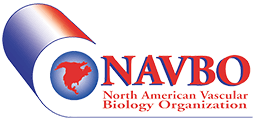Monica Hinds, Ph.D.
October 1, 2019
Department of Biomedical Engineering
Oregon Health & Science University
Portland, OR
Primary Research:
The goal of our research is to determine the molecular responses of blood and vascular cells in cardiovascular disease to biomaterial surfaces and use this knowledge to design new materials for cardiovascular applications. In our research we utilize biochemical and molecular tools with unique animal models to provide an understanding of biomaterial induced endothelialization and thrombosis. It is well known that hemodynamic forces alter the cytoskeletal structures, morphology, and functions of endothelial cells, yet the mechanisms by which cytoskeletal architecture regulates endothelial cell functions independent from hemodynamic effects are unknown. We are studying the mechanisms by which endothelial cell cytoskeletal preconditioning contributes to both the formation of atherosclerosis and the vascular healing responses to implanted biomaterials. Additionally, we are employing our tools and knowledge of the blood contact pathway in disease to define the roles of coagulation factors XII and XI in in vivo responses to biomaterials.
Lab Web Site: https://www.ohsu.edu/school-of-medicine/hinds-lab
Members of the laboratory:
Deirdre Anderson, PhD, Assistant Staff Scientist
Novella Bates, PhD student
Meghan Fallon, PhD student
Matthew Hagen, PhD student
Claire Johnston, undergraduate student
Tiffany Burch, technician
Jennifer Johnson, technician

Recent Publications:
- Lorentz CU, Verbout NG, Cao Z, Liu L, Hinds MT, McCarty OJT, Ivanov I, Tucker EI, Gailani D, Gruber A. Factor XI contributes to myocardial ischemia-reperfusion injury in mice. Blood Adv. 2018 Jan 23;2(2):85-88 . PMC5787867
- Anderson D.E.J., Pohan, G., Raman J., Konecny, K., Yim, E.K., Hinds, M.T. Improving surgical methods for studying vascular grafts in animal models. Tissue Engineering Part C Methods. 2018 Aug;24(8):457-464.
- Jurney, P.E., Anderson D.E.J., Pohan, G., Yim, E.K., Hinds, M.T. Reactive ion plasma modification of poly(vinyl-alcohol) increases primary endothelial cell affinity and reduces thrombogenicity, Macromol Biosci. 2018 Nov;18(11):e1800132.
- Anderson DEJ, Truong KP, Hagen MW, Yim EKF, Hinds MT. Biomimetic modification of poly(vinyl alcohol): Encouraging endothelialization and preventing thrombosis with antiplatelet monotherapy. Acta Biomater. 2019 Mar 1;86:291-299.
- Lorentz CU, Verbout NG, Wallisch M, Hagen MW, Shatzel JJ, Olson SR, Puy C, Hinds MT, McCarty OJT, Gailani D, Gruber A, Tucker EI. Contact activation inhibitor and factor XI antibody, AB023, produces safe, dose-dependent anticoagulation in a phase 1 first-in-human trial. Arterioscler Thromb Vasc Biol. 2019 Apr;39(4):799-809.
- Hagen MW, Hinds MT. Static spatial growth restriction micropatterning of endothelial colony forming cells influences their morphology and gene expression. PLoS One. 2019 Jun 12;14(6):e0218197. PMC6561595.
- Pohan G, Chevallier P, Anderson DEJ, Tse JW, Yao Y, Hagen MW, Mantovani D, Hinds MT, Yim EKF. Luminal Plasma Treatment for Small Diameter Polyvinyl Alcohol Tubular Scaffolds. Front Bioeng Biotechnol. 2019 May 22;7:117. PMC6541113.
- Puy C, Ngo ATP, Pang J, Keshari RS, Hagen MW, Hinds MT, Gailani D, Gruber A, Lupu F, McCarty OJT. Endothelial PAI-1 (Plasminogen Activator Inhibitor-1) Blocks the Intrinsic Pathway of Coagulation, Inducing the Clearance and Degradation of FXIa (Activated Factor XI). Arterioscler Thromb Vasc Biol. 2019 Jul;39(7):1390-1401. PMC6597189
